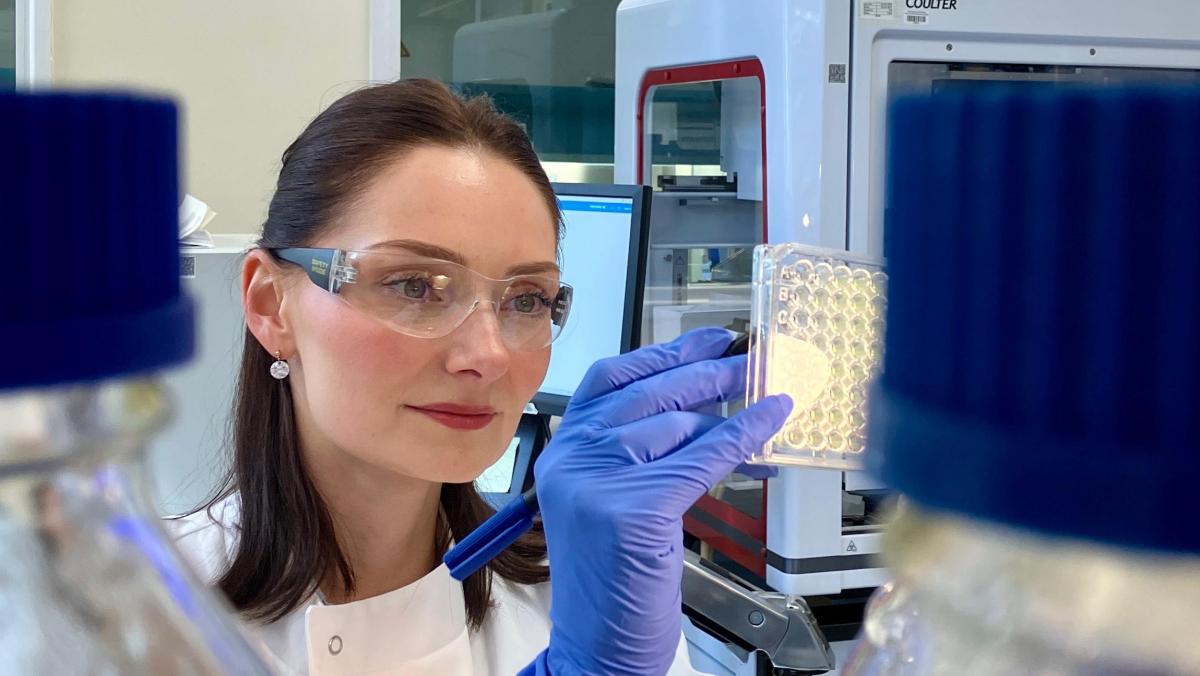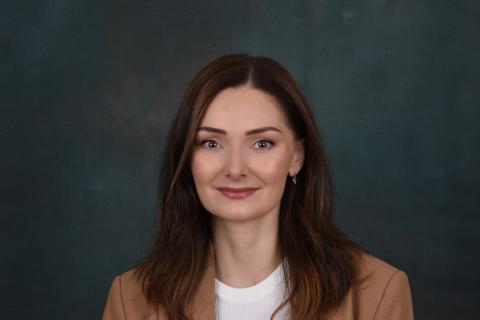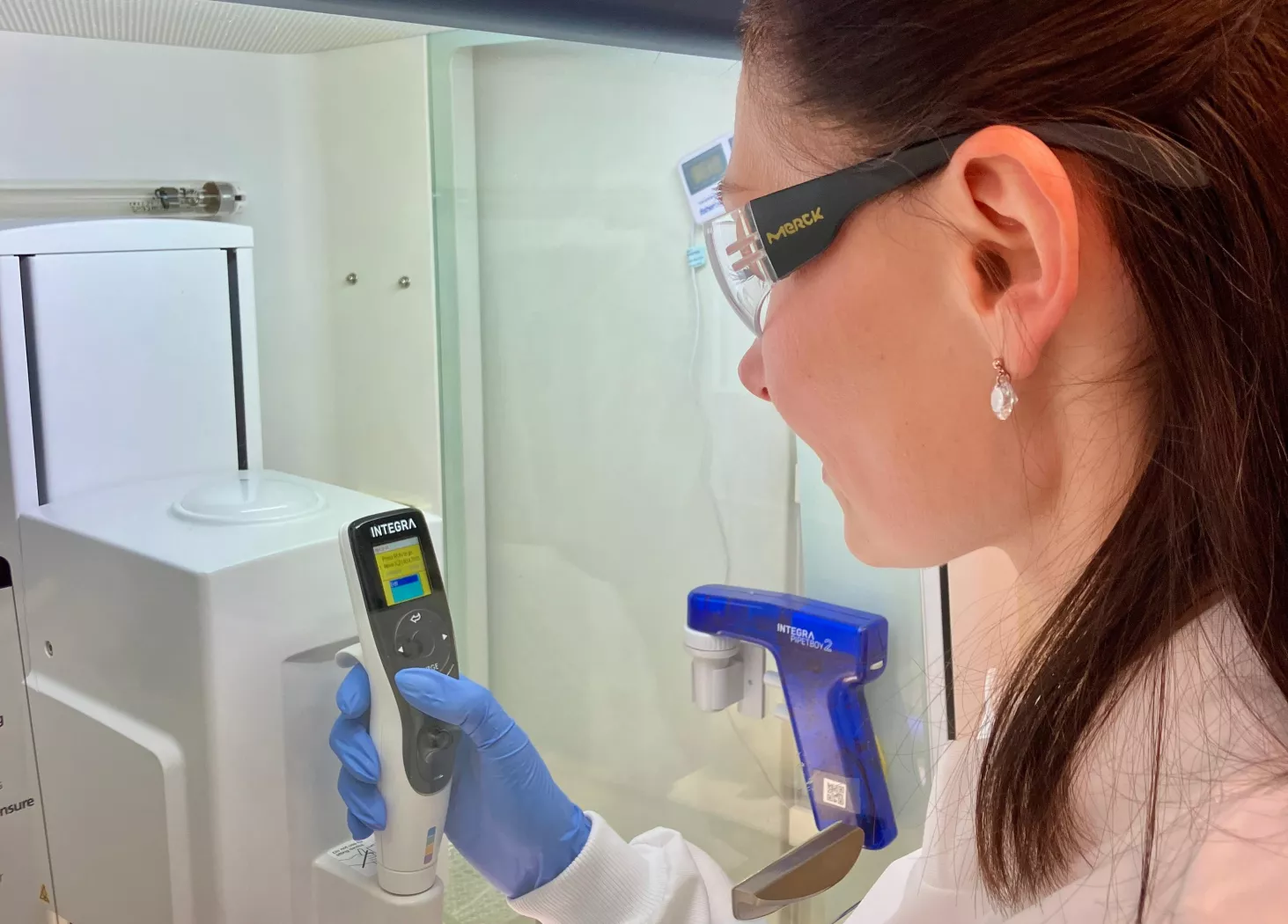Many antibiotics are becoming ineffective due to antimicrobial resistance (AMR), where bacteria become resistant to the drugs designed to kill them. At IOI, scientists are working to develop new antimicrobial drugs to overcome this challenge.
Dr Mariia Trush is a Research Assistant working as part of IOI’s drug discovery programme. With a background in bioorganic chemistry and bioengineering, Mariia works with synthetic chemists, biochemists, and fellow microbiologists to explore new molecules for their potential as future antibiotics.

As a Research Assistant, Mariia is involved in nearly every stage of the testing process to determine the effectiveness of antimicrobial molecules. Mariia and the team work with a large panel of disease-causing bacteria that carry a variety of different genes associated with antimicrobial resistance. They use these to evaluate the effects of novel molecules on bacterial survival and growth. This helps identify potential novel antimicrobial molecules and establish their effect against antibiotic-resistant strains of bacteria.
In addition to determining a molecule's effectiveness in killing bacteria, an essential part of the drug development process is understanding how bacterial resistance to the new antimicrobial may develop. To investigate this, Mariia exposes bacteria to different concentrations of the antimicrobial to observe how often, and how quickly, resistant bacterial colonies emerge.
My day can be really varied, working on many different parts of the drug development process. It’s exciting to be continually discovering more about how the molecules work and gathering information that could one day contribute to the clinical use of a new antimicrobial and save lives.

Mariia employs a test called a serial passage assay to study how resistance evolves over time when bacterial populations are exposed to the new antimicrobial. On day one of testing, bacteria are exposed to a low concentration of the antimicrobial, which kills some of the population whilst others survive due to their natural resistance.

These surviving bacteria are then exposed to slightly higher concentrations of the antimicrobial each subsequent day, with the process continuing over several days to weeks. This experiment allows Mariia to observe how resistance to the antimicrobial develops over multiple generations of bacteria under increasing selective pressure.. Mariia then examines the resistant mutants to understand how stable their resistance is over time and whether these mutants have any significant cross-resistance to other antibiotics, which could limit treatment options in the future.
The next stage in the IOI lab involves determining what exactly the new antimicrobial molecule is targeting in the bacteria and how it’s doing its job. Mariia collaborates with biochemists, crystallographers, and bioinformaticians who use a range of different techniques to uncover the interaction of the antimicrobial molecule with the bacteria.
One of the best parts of working at IOI is the collaborative approach we take and the diverse perspectives this brings. We all contribute in different ways to the overall complex process of drug development and are all working towards a common goal to find new solutions to tackle the global threat of AMR.

